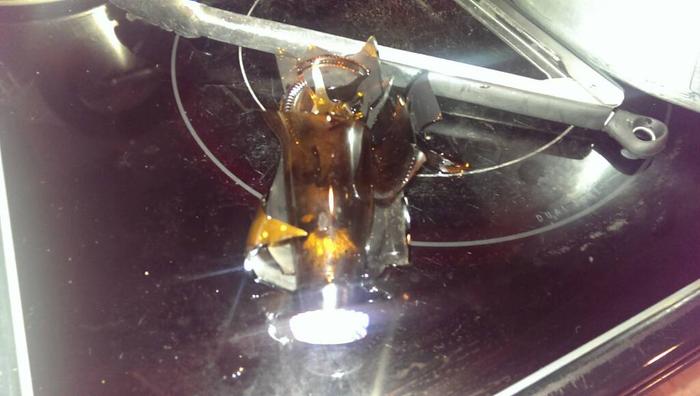Thaumatourge
Active Member
I would not be worried about it. That lid is going to be a safety measure should a bottle explode. You can replace a lid. Eyes, not so much.

After the cider has fermented for a while and you take a sample for testing the SG, do you degas the sample that is tested?
Hi Greg,Hello there. New guy here sucking up info in preparation for my first cider brew. I was just wondering if anybody has used the aluminum bud bottles in this pasteurization method? I would think the better conductivity of aluminum would transfer the heat better and there would be no risk of flying glass shards. A bonus would be 16 oz vs 12 oz meaning less bottles to clean before bottling.
Thanks,
Greg
Pasteurizing some pineapple cider right now but a few of the bottles are fizzing out. Is this cause the pressure is too high or because my bottles are sealed improperly? When I opened the PET tester bottled I had it exploded fizz everywhere.
Also, even though the yeast are dead does the cider still age? My cider is a little 'hot' at the moment.
Depending on FG reading, you may find that some bottles carb enough in just 24 hours. How long did yours carb? I have found that with an FG of 1.01 or less, I may not even need to pasteurize; but more than that and you really have to check it often!
Check out post #29 Post # 29 in this thread ClikI remember people referencing a lower temp, any idea where that post is? Or do most people use the steps in the original post?

This process scares the crap out of me. I need a taller pot. I am using 32OZ flip top bottles. I let the carb off before warming them and putting them in the tap water. Then apply heat. The cider goes all the way to the lid and then I get spooked. There is 2 inches of the bottle sticking out of the water. This is my 2 nd try at this. Not sure what I am posting this for but i needed to say it somewhere people understand.
wow this is a long thread
i pasteurized my apfelwein but it s almost flat now
why is this
Would this work for beer(s) as well? Ales, lager, porter, IPAs, stouts, etc....thanks in advance
Enter your email address to join: